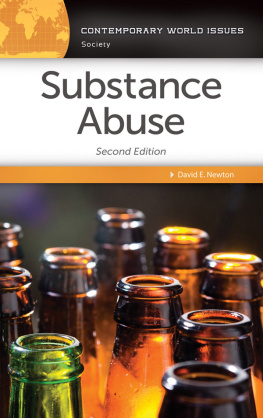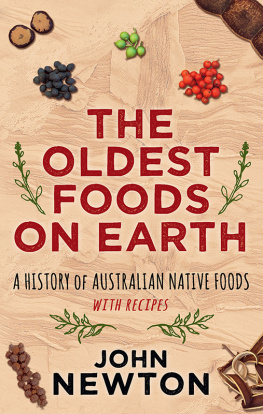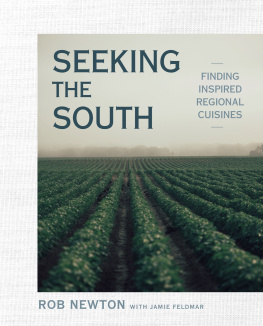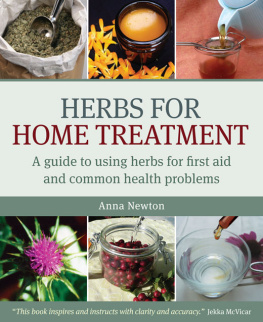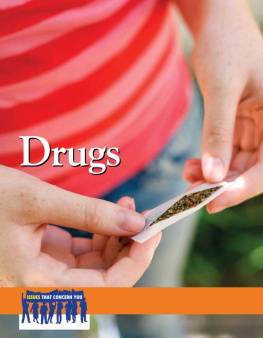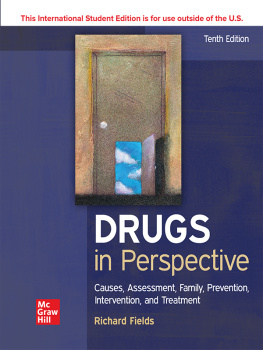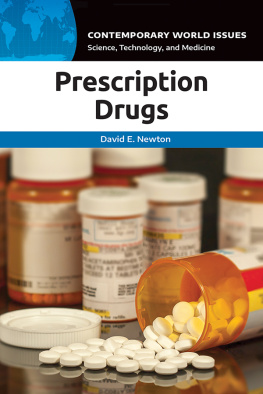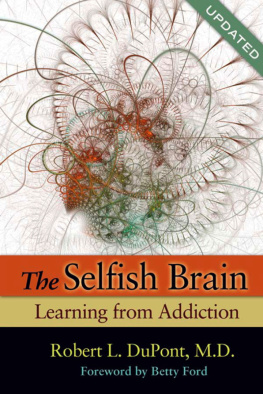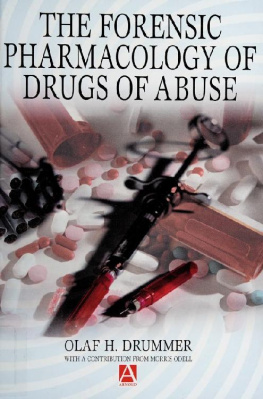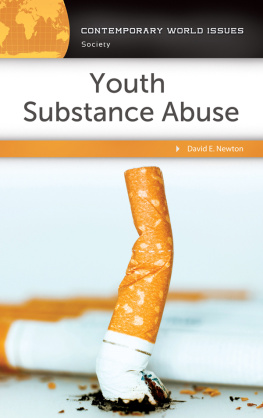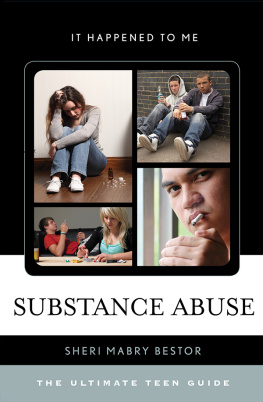Substance Abuse
Recent Titles in the
CONTEMPORARY WORLD ISSUES
Series
Global Pandemic Threats: A Reference Handbook
Michael C. LeMay
Same-Sex Marriage: A Reference Handbook, second edition
David E. Newton
DNA Technology: A Reference Handbook, second edition
David E. Newton
Modern Sport Ethics: A Reference Handbook, second edition
Angela Lumpkin
Marijuana: A Reference Handbook, second edition
David E. Newton
Gun Control in the United States: A Reference Handbook, second edition
Gregg Lee Carter
The Right to Die: A Reference Handbook
Howard Ball
Student Debt: A Reference Handbook
William Elliott III and Melinda K. Lewis
Food Safety: A Reference Handbook, third edition
Nina E. Redman and Michele Morrone
Human Trafficking: A Reference Handbook
Alexis A. Aronowitz
Social Media: A Reference Handbook
Kelli S. Burns
Prisons in the United States: A Reference Handbook
Cyndi Banks
Books in the Contemporary World Issues series address vital issues in todays society such as genetic engineering, pollution, and biodiversity. Written by professional writers, scholars, and nonacademic experts, these books are authoritative, clearly written, up-to-date, and objective. They provide a good starting point for research by high school and college students, scholars, and general readers as well as by legislators, businesspeople, activists, and others.
Each book, carefully organized and easy to use, contains an overview of the subject, a detailed chronology, biographical sketches, facts and data and/or documents and other primary source material, a forum of authoritative perspective essays, annotated lists of print and nonprint resources, and an index.
Readers of books in the Contemporary World Issues series will find the information they need in order to have a better understanding of the social, political, environmental, and economic issues facing the world today.
CONTEMPORARY WORLD ISSUES
Substance Abuse
A REFERENCE HANDBOOK
Second Edition
David E. Newton

Copyright 2017 by ABC-CLIO, LLC
All rights reserved. No part of this publication may be reproduced, stored in a retrieval system, or transmitted, in any form or by any means, electronic, mechanical, photocopying, recording, or otherwise, except for the inclusion of brief quotations in a review, without prior permission in writing from the publisher.
Library of Congress Cataloging-in-Publication Data
Names: Newton, David E., author.
Title: Substance abuse : a reference handbook / David E. Newton.
Description: Second edition. | Santa Barbara, California : ABC-CLIO, an Imprint of ABC-CLIO, LLC, [2017] | Series: Contemporary world issues | Includes bibliographical references and index.
Identifiers: LCCN 2017012076 (print) | LCCN 2016056067 (ebook) | ISBN 9781440854774 (acid-free paper) | ISBN 9781440854781 (ebook)
Subjects: LCSH: Substance abuseHandbooks, manuals, etc.
Classification: LCC HV4998 .N488 2017 (ebook) | LCC HV4998 (print) | DDC 362.29dc23
LC record available at https://lccn.loc.gov/2017012076
ISBN: 978-1-4408-5477-4
EISBN: 978-1-4408-5478-1
212019181712345
This book is also available as an eBook.
ABC-CLIO
An Imprint of ABC-CLIO, LLC
ABC-CLIO, LLC
130 Cremona Drive, P.O. Box 1911
Santa Barbara, California 931161911
www.abc-clio.com
This book is printed on acid-free paper 
Manufactured in the United States of America
For Ed and Marnie Semeyn,
Still the tops!
Contents
The story of substance abuse and efforts to exert control over the misuse of drugs remains one of the most fascinating tales in American culture. For nearly a century, the American legal system has treated the misuse of marijuana, cocaine, heroin, LSD, amphetamines, and other psychoactive substance as a critical social problem requiring legal remedies in the vast majority of cases. During the 1970s, when American culture itself appeared to be threatened by the widespread use of such substances, President Richard M. Nixon declared a war on drugs that has, for the most part, continued to the present day. In light of the apparent failure of that war to resolve the nations drug problems, more and more legislators, addiction experts, psychologists and sociologists, and other interested parties are calling for a new approach to the nations drug problem. That approach is based on the assumption that substance abuse and addiction are primarily physiological problems that should be dealt with by means other than legal remedies, as are other health and medical problems. So, the first two decades of the twenty-first century have seen some movement away from the crime-based approach to substance abuse to a more medical-centered view of the problem.
In the brief period between the two editions of this book, evidence of this evolution has become more and more apparent. As the second edition goes to press, for example, the U.S. Congress has just passed the first meaningful legislation on substance abuse in decades, legislation that, for the first time, takes a long-term view on the problem and its resolution. Thus, while some features of the first edition still seem as fresh as if they were written yesterday, a new toneone that often seems subsumed by elements of new hope and optimismcan also be found within these pages.
The format of the new edition is largely the same, although there have been some revisions in the content and arrangement of chapters.
Substance Abuse

Smoking opium valued at $25,000 was seized on a ship in Brooklyn, New York, by members of the Surveyors Searching Squad of New York on March 9, 1925. The opium was hidden in a coal bunker. (AP Photo)
The nation was startled by the news at the end of 2015. The U.S. National Center for Health Statistics (NCHS) issued a report that the death rate among Americans had increased in the previous year, a trend that had not been seen in over a decade. Although progress in combating deaths from cancer, heart attacks, and other traditional disease-killers had continued to decrease for the most part, death rates began to move upward for a few specific conditions, including Alzheimers disease, suicide, and substance abuse. NCHS reported, for example, that the death rate for drug overdoses had increased by 137 percent between 2000 and 2015, a trend that reflected more than anything the growing epidemic of opioid abuse and addiction (Rudd et al. 2016). Ironically, the group most at risk for the increase in death rates was relatively well-to-do middle-class white males, a category of Americans that had been experiencing a drop in death rates for many decades. The country was shocked and baffled at the new trend. Had substance abuse become the new killer disease capable of sweeping through the nation in coming decades?
The use of natural and synthetic products that alter ones consciousness has been part of human culture as far back as records exist. In some instances, it even predates any written or pictorial accounts that humans left behind. In 1992, for example, Jan Lietava, of Comenius University in Bratislava, reported on the discovery of a number of natural herbs with mind-altering properties, including ephedra, at a Neanderthal burial site in the Shanidar region of Iraq dating to at least 50,000 bce. Lietava wrote that the substances found at the site had marked medical activity (Lietava 1992). The discovery is thought to be the earliest evidence of drug use by humans.

